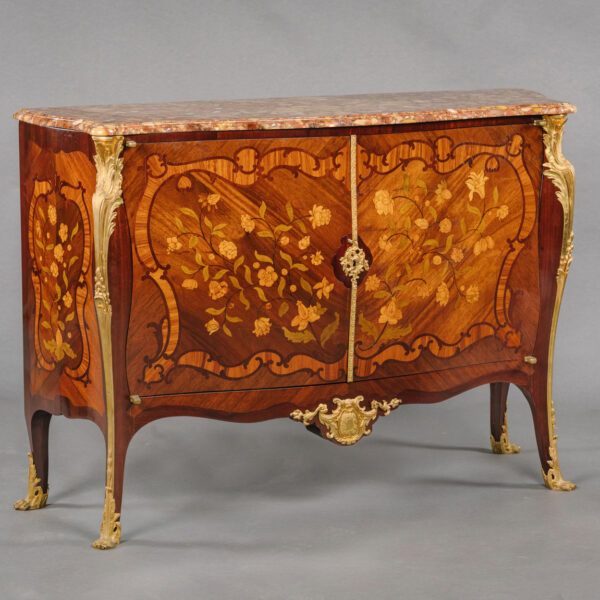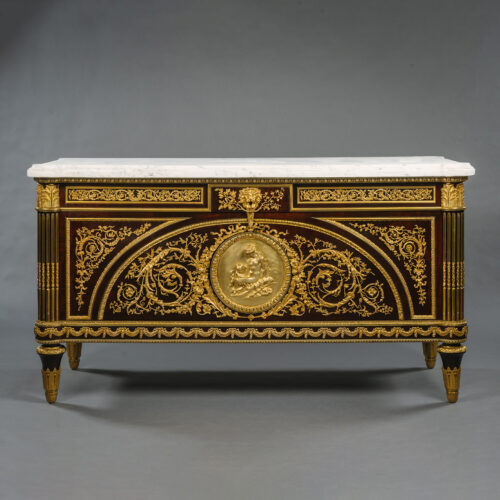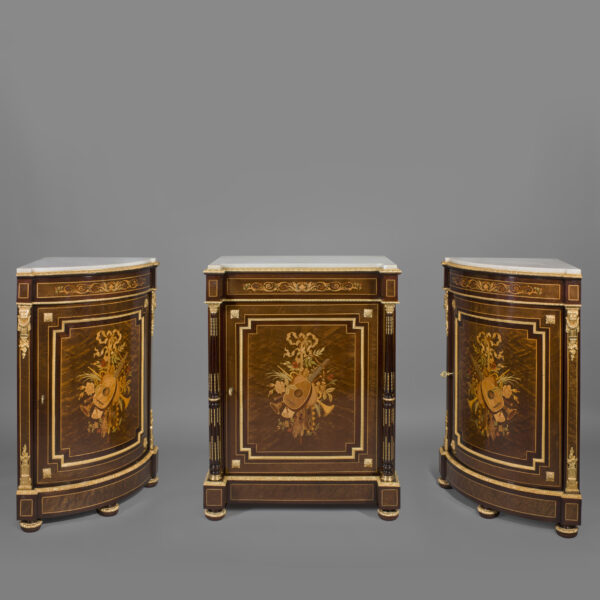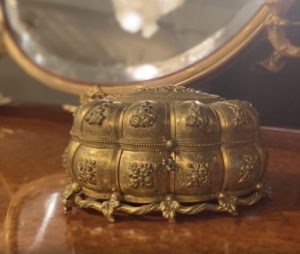Charles-Guillaume Winckelsen
A Pair of Napoléon III Lacquer And Ebonised Commodes à Vantaux
£230,000
A Pair of Napoléon III Gilt-Bronze, Chinese Lacquer And Ebonised Side Cabinets By Charles-Guillaume Winckelsen, Paris. Signed 'Chles WINCKELSEN 21...
Dimensions
Height: 102 cm (41 in)Width: 180 cm (71 in)
Depth: 41 cm (17 in)
Description
A Pair of Napoléon III Gilt-Bronze, Chinese Lacquer And Ebonised Side Cabinets
By Charles-Guillaume Winckelsen, Paris.
Signed ‘Chles WINCKELSEN 21 Rue St Louis’, Paris.
Each with a top of the finest brocatelle jaune d’Espagne marble above a brass-inlaid frieze. The front edge of the top stepped forward above two protruding central doors and flanked by recessed doors. Each door with stiff-leaf cast gilt-bronze frame enclosing a lacquer panel richly embossed is golden yellow hues against a black ground and depicting architectural pagoda scenes peopled with courtly figures and palace attendants. The interior fitted with two shelves. One cabinet later fitted with four drawers. The brass inlaid apron with central winged mask mount. Raised on six toupie feet.
Paper label to reverse:
‘Eigentum des Grafen Anton und der Grafinnen Karoline und Adelheid Lanckoronski mit allem, was darim ist und darauf steht’ [Property of Count Anton and Countesses Karoline and Adelheid Lanckoronski]
France, Circa 1865.
These magnificent side cabinets with panelled doors of Japanese black and yellow lacquer, are by Charles Winckelsen, a pre-eminent cabinetmaker from the Napoléon III period who is famed for his high quality production. These magnificent cabinets rank amongst his most opulent creations, being made to the finest standard, with gilt-bronze mountings and displaying unusually large and rare Japanese export lacquered panels. Winckelsen’s furniture was the preserve of the very wealthy and accordingly these cabinets have a most illustrious provenance.
The Lanckoroński family have played a leading role in Polish history and cultural life for at least seven centuries. Following the partition of Poland the Lanckoroński family kept close ties with the Viennese court.
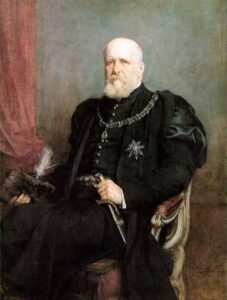
Portrait of Karol Lanckoroński in Polish costume by Kazimierz Pochwalski, Kraków, CIrca 1906.
Count Karol Lanckoroński was born in Vienna but spent his childhood in Paris before returning to study at the university of Vienne where in 1870 he received his doctorate in law. From the mid-1880s Count Lanckoroński devoted himself to studying the humanities and arts. The Lanckoroński Collection was one of the richest private galleries in Europe: in Vienna only the Liechtenstein and Harrach Collections could compare with it. Most of the art treasures in the the Lanckoroński collection had been purchased by Count Karol himself, however some 30 paintings he inherited including two magnificent paintings by Rembrandt, came from the gallery of Stanislas Augustus Poniatowski, the King of Poland. From the mid-1880s the collection was housed in the Lanckoroński Palace, Vienna, Jacquingasse 18.
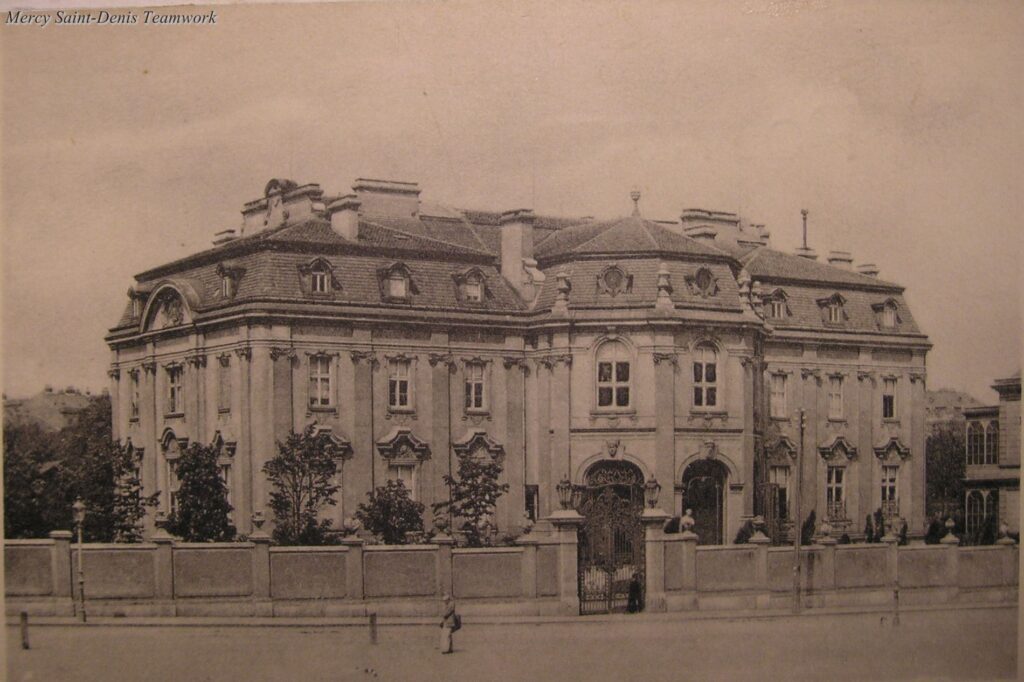
Palais Lanckoroński as seen from the street in 1895.
With the outbreak of World War II the Lanckoroński Palace and its fabled art collection was confiscated by Nazi Germany. Many of its art treasures remained in Austria but some were destroyed in storage. The Lanckoroński Palace was bombed in 1945 and looted in the aftermath of the war, ultimately abandoned and demolished in the 1960s. The most valuable pieces were removed to Switzerland after the war and numerous masterpieces were sold mostly in the 1950s. It is not known when the present cabinets left the Lanckoroński collection before being sold in Paris in 1969.
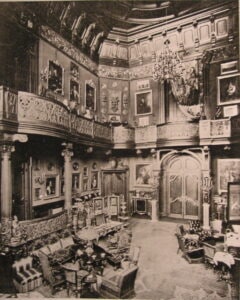
The Grand Hall, Palais Lanckoronski, circa 1900
Date
Circa 1865
Origin
France
Medium
Ebonised Wood
Signature
Signed 'Chles WINCKELSEN 21 Rue St Louis', Paris.
The atelier of Charles-Guillaume Winckelsen is one of the undiscovered secrets of the Second Empire exhibition period. Established at 23 Val-Sainte-Catherine, Paris in 1854, it flourished until his death in 1871. As a result of his comparatively short career very little of his work is available today.
Born in 1817, at the new dawn of the Bourbon dynasty, Winckelsen died in 1871 as the Third republic was being formed. Thus his whole philosophy of design, alongside his contemporaries, was one of maintaining the emblems of the ancien regime. In re-using motifs from the eighteenth century Winckelsen favoured the Louis XVI style without reverting to simple pastiche.
Winckelsen’s bronze casting was of the highest quality, easily on a level with the celebrated Thomiere in the early years of the century. He re-created all of his moulds, never re-using or simply copying existing models.
His business was sold by his widow in July 1871 to the celebrated Henri Dasson, who thus was able to use the exquisite collection of master patterns built up by Winckelsen to great effect.
Bibliography:
Ledoux-Lebard, Denise. Les Ebenistes du XIX siècle, Les Editions de l’Amateur (Paris), 1984; pps 635-8.
Count Karol Lanckoroński (1848-1933), Palace Lanckoroński, Vienna, Austria.
Thence by descent (according to the paper label) Count Anton Lanckoroński (1893-1965) and Countesses Karoline (1898-2002) and Adelheid Lanckoroński (1903-1980).
Galerie Chateaudun, 55 Rue de Chateaudun, Paris.
Swedish private collection, acquired from the above on September 5 1969.
Ledoux-Lebard, Denise. Les Ebenistes du XIX siècle, Les Editions de l’Amateur (Paris), 1984; pps 635-8.
Payne, Christopher. Paris Furniture – The Luxury Market of the 19th Century (Paris), 2018; pps 549-554.
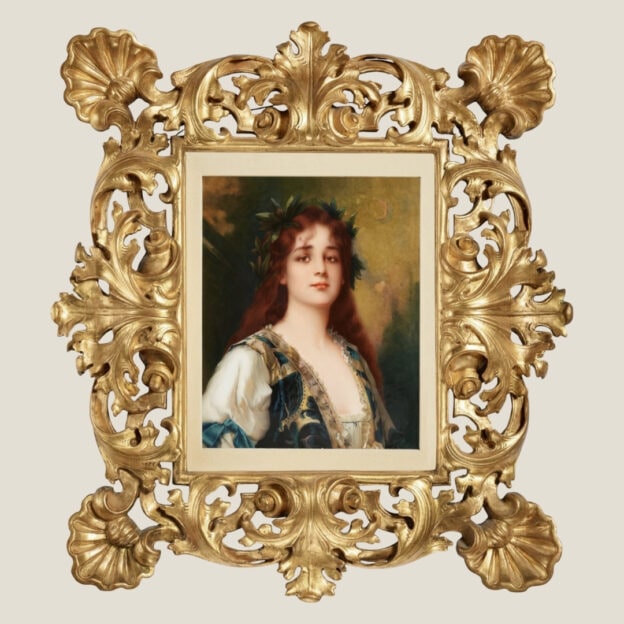




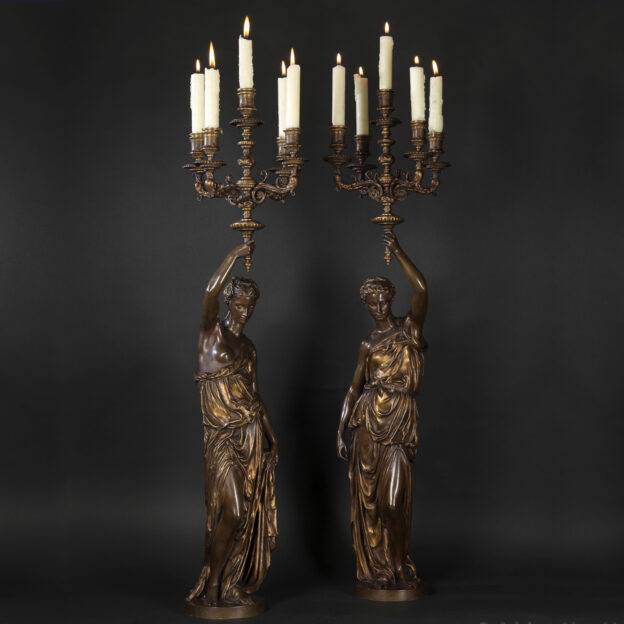
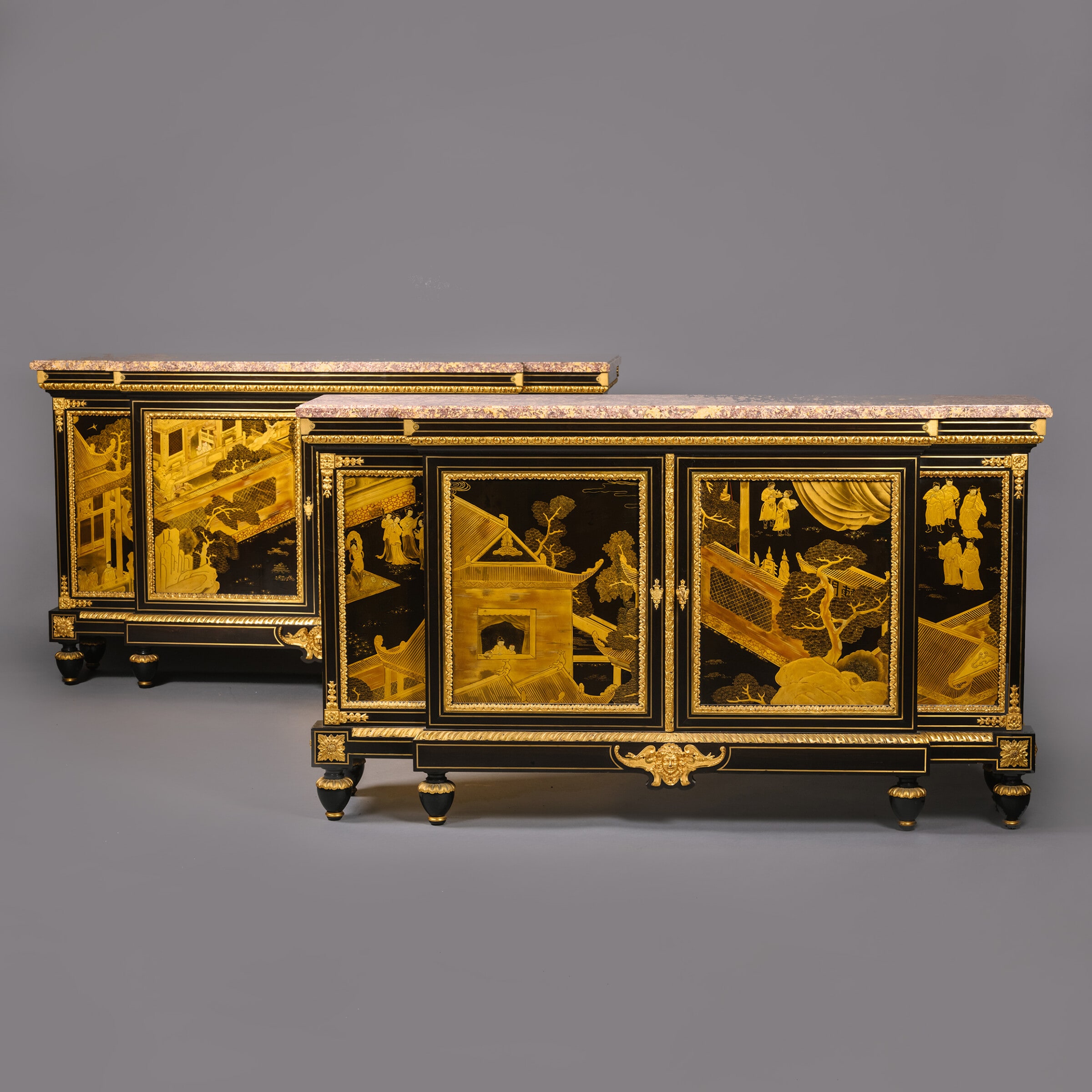


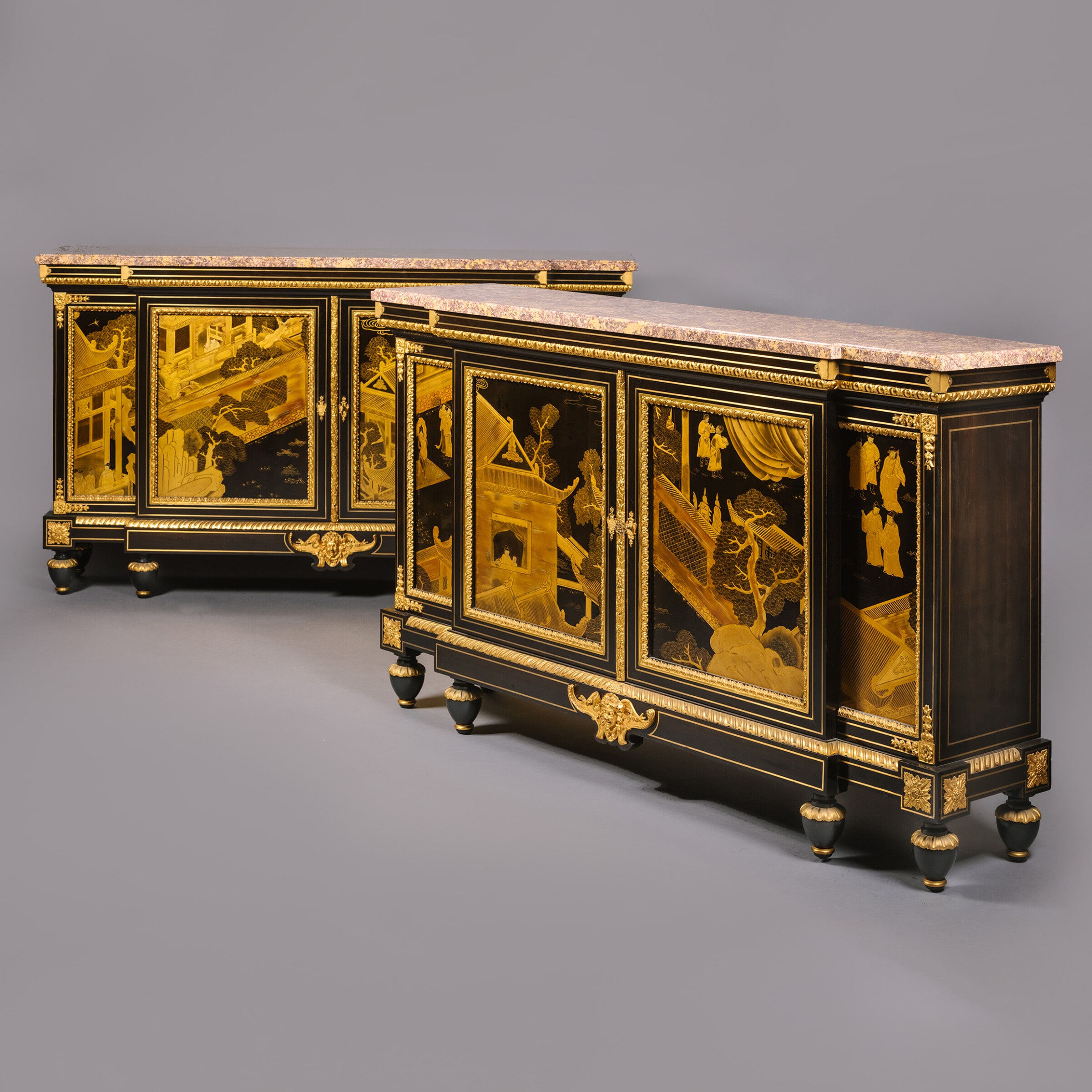
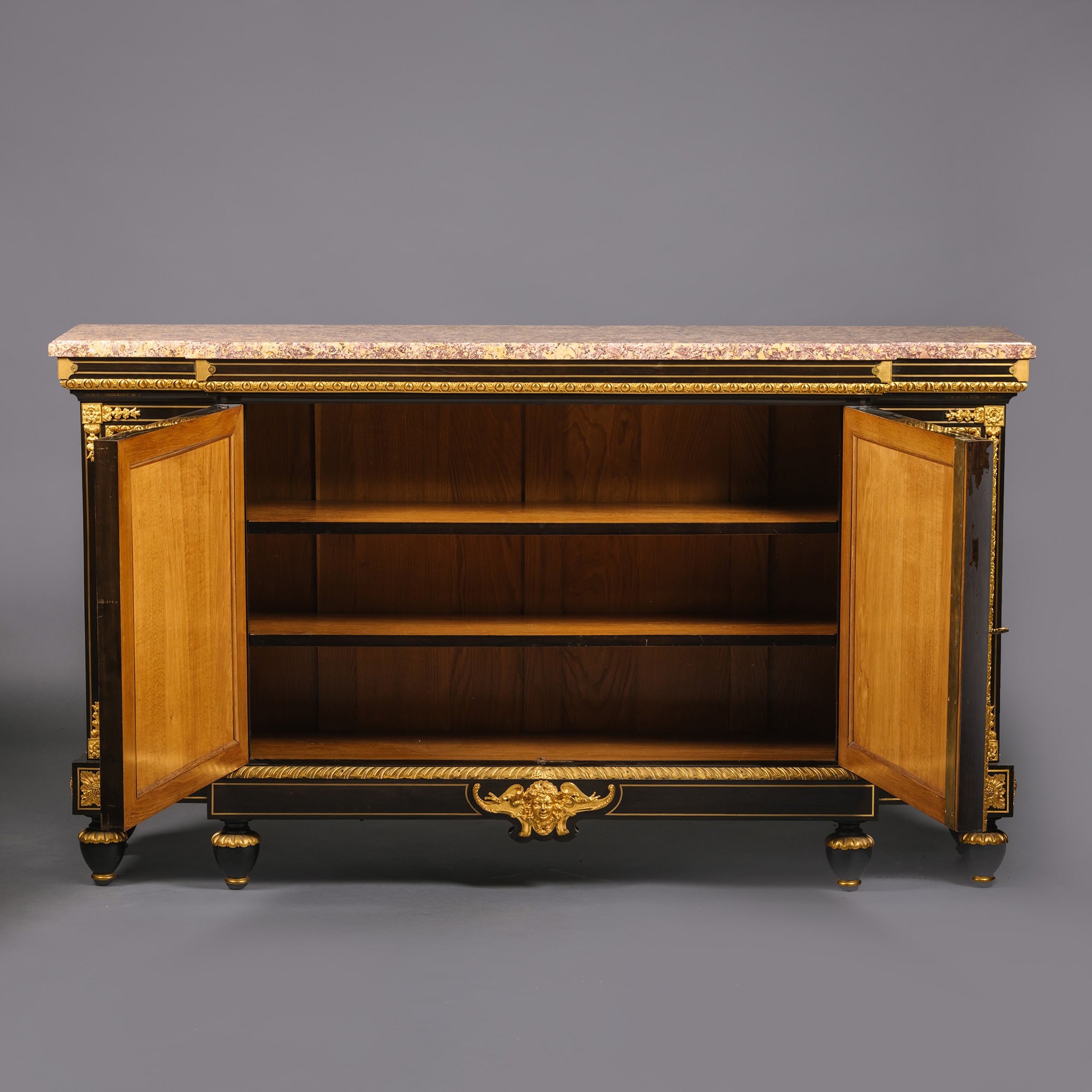
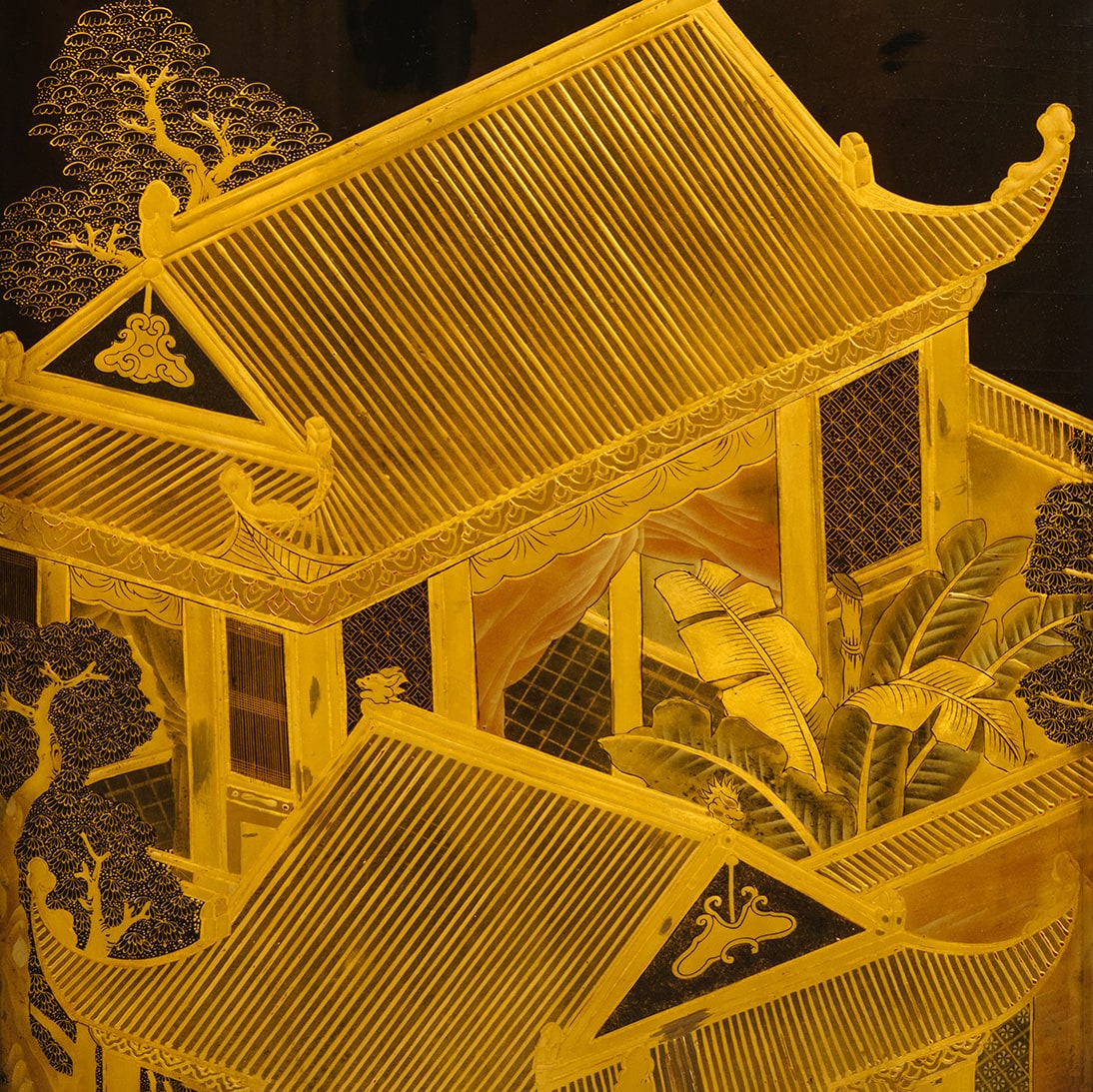
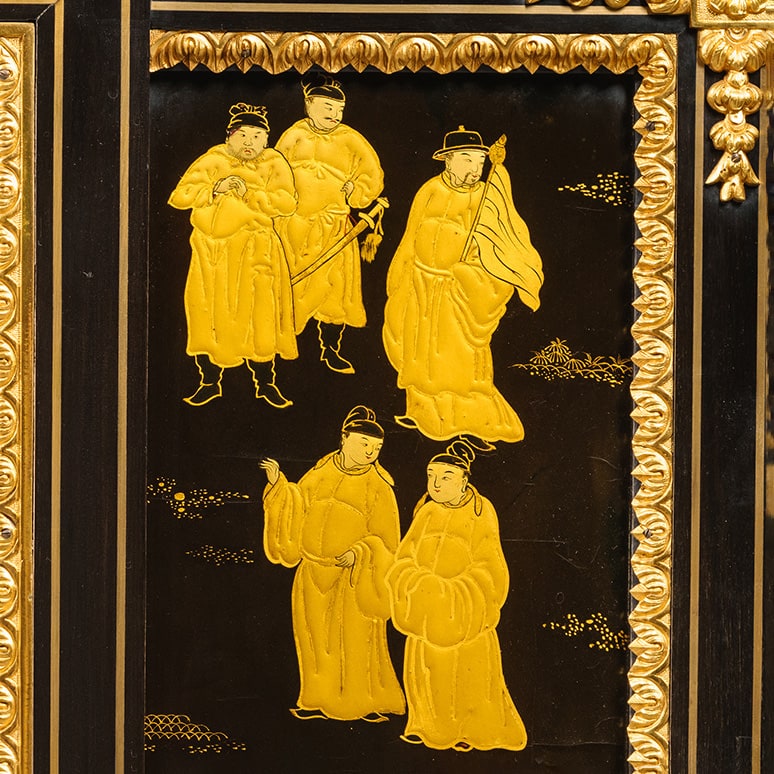
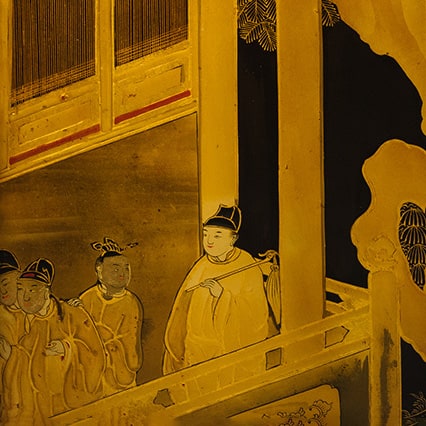
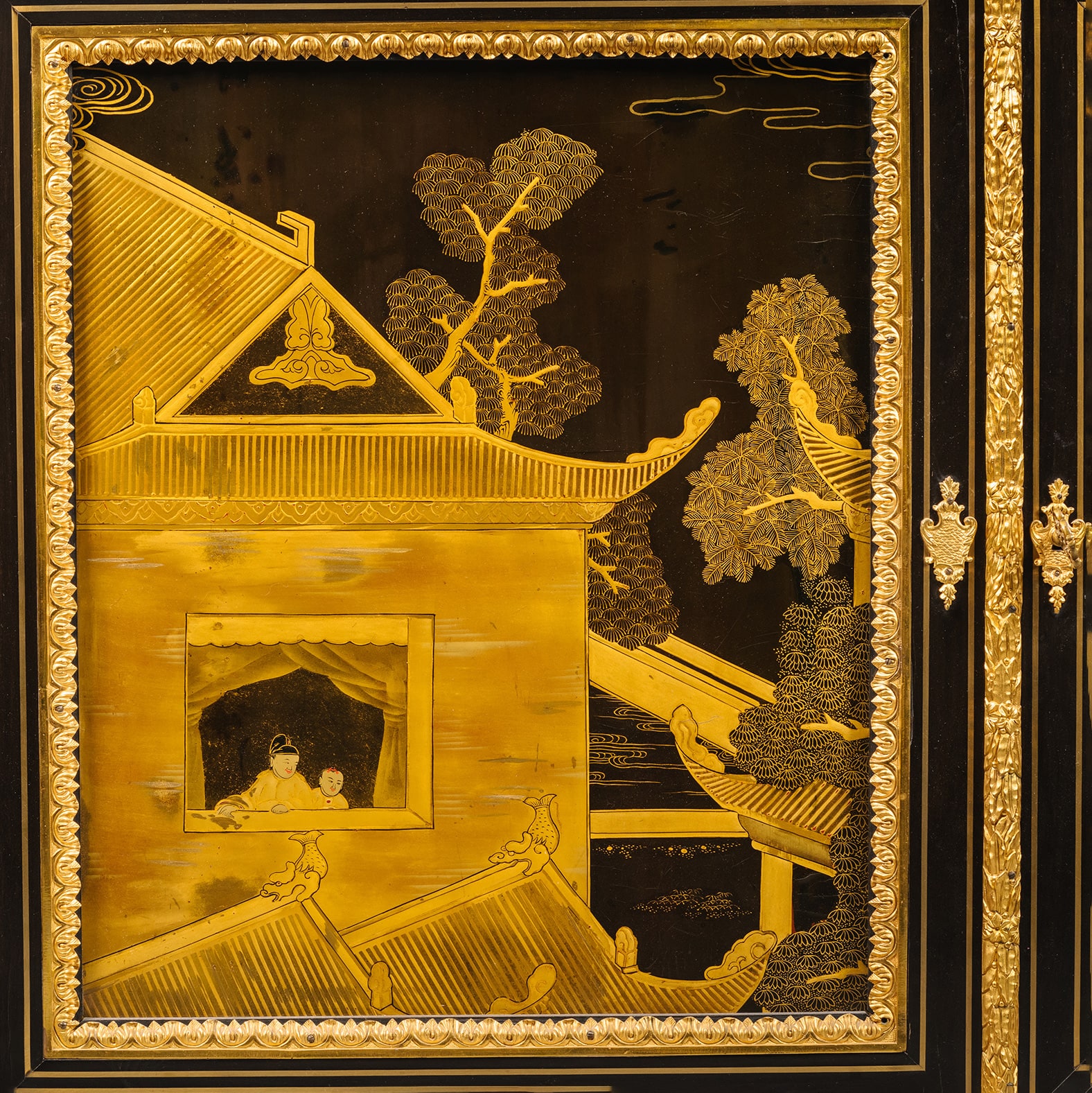


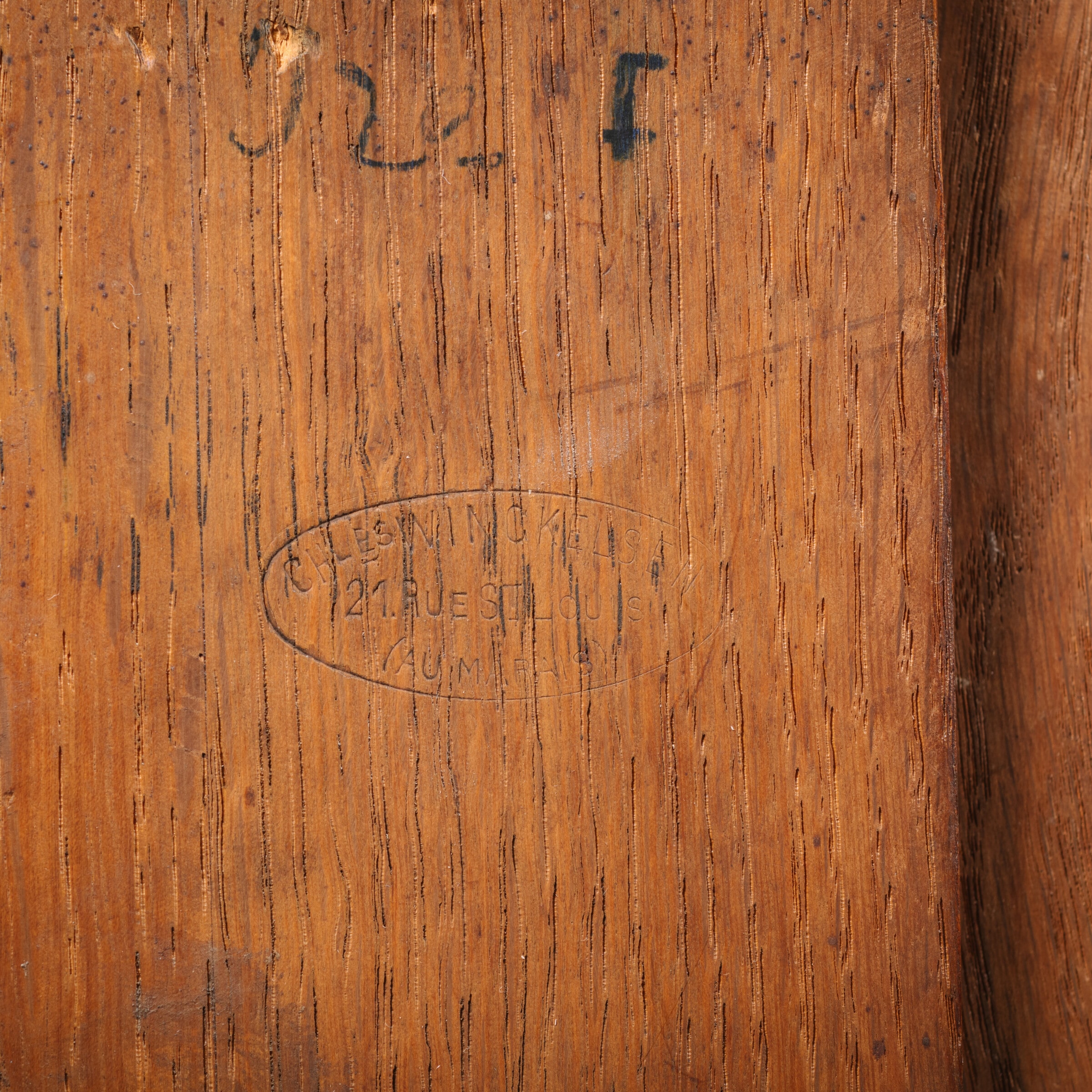

 Print
Print